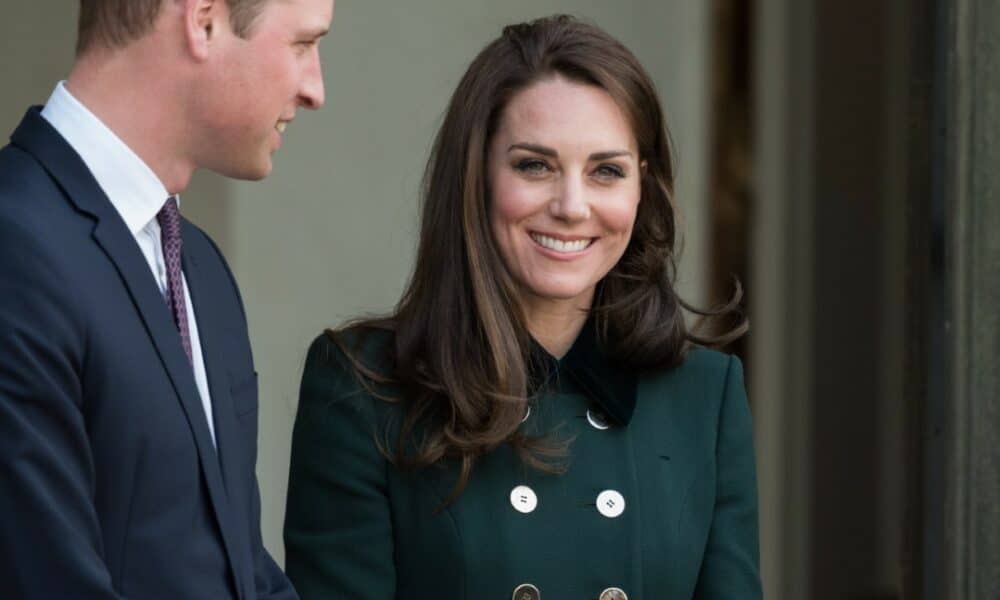The British monarchy is undergoing one of its most transformative periods in recent history, driven by significant health challenges affecting its senior leadership. In February 2024, King Charles III, aged 75, was diagnosed with prostate cancer, a condition that required adjustments to his official duties and led to a reduced schedule. This scenario became even more challenging with the announcement in March of the same year that the Princess of Wales, Kate Middleton, was also battling cancer. Both diagnoses brought health issues to the forefront and necessitated a restructuring of responsibilities within the royal family, positioning Prince William and Kate as central figures in leading the monarchy.
The health battles faced by Charles and Kate symbolize a turning point in the monarchy’s transparency regarding personal matters, breaking away from a historical tradition of secrecy. The openness about these challenges has reinforced public trust in the institution. Meanwhile, William and Kate’s schedule intensified, with the couple attending more than 250 official engagements in 2023. Their work reflects not only a commitment to preserving tradition but also an adaptation to meet the contemporary demands of a relevant and accessible monarchy.
Through dedication to social, environmental, and educational causes, William and Kate are demonstrating how the monarchy can align with the global challenges of the 21st century. They are seen as pillars of continuity and renewal, consolidating their roles as leaders of the next generation while strengthening ties between the monarchy and the public.
The impact of King Charles III’s health challenges on the monarchy
The announcement of King Charles III’s cancer diagnosis in February 2024 sparked discussions about the monarch’s ability to continue leading the institution. At 75 years old, Charles has balanced medical treatment with his royal duties, maintaining a carefully curated schedule of commitments. The impact of his health extends beyond his personal responsibilities, highlighting the resilience and strategic roles of other royal family members.

The decision to publicly share details of his condition marked a significant departure from the royal family’s traditional secrecy. This approach has been widely viewed as an effort to bring the monarchy closer to the public, promoting transparency during times of adversity. Charles has adjusted his schedule, allowing other members, such as William and Queen Camilla, to take on additional responsibilities. In this context, William and Kate’s roles have evolved even further.
Kate Middleton’s resilience in facing cancer
The Princess of Wales, Kate Middleton, faced her own battle with cancer in 2024, demonstrating remarkable courage and determination. Her diagnosis, announced in March, was followed by surgery and months of chemotherapy, concluding in September. During this period, Kate significantly reduced her public appearances to focus on her recovery.
Following the completion of her treatment, Kate gradually resumed her official duties, prioritizing causes such as child health and primary education. Her recovery symbolizes strength and resilience, qualities that have reinforced her role as a central figure in the monarchy. Kate’s return was marked by significant events, including her participation in the annual Christmas carol service at Westminster Abbey, where her dedication and connection with the public were widely praised.
William and Kate: pillars of a modern monarchy
As King Charles III reduced his official activities, William and Kate stepped into even more prominent roles. In 2023, the couple attended 250 events, showcasing an unwavering commitment to preserving and modernizing the monarchy. Their schedule included diplomatic visits and community engagements that strengthened the bond between the monarchy and the British people.
Beyond their ceremonial roles, William and Kate prioritize causes that resonate deeply with modern audiences:
- Mental health: William leads initiatives focused on emotional well-being, particularly among young people and vulnerable communities, aiming to break stigmas and encourage open dialogue.
- Environmental sustainability: Projects like the Earthshot Prize, spearheaded by William, promote innovative solutions to global environmental issues.
- Early childhood education: Kate is an active advocate for programs focused on early childhood development, striving to improve learning conditions and health for children.
- Community connection: The couple frequently visits local communities, emphasizing the importance of direct relationships with the public.
Adapting and modernizing the monarchy
Under the leadership of William and Kate, the monarchy seeks to balance tradition with the demands of the modern world. This includes the strategic use of digital platforms to foster an accessible and transparent image. Adjustments to protocols, such as more informal public appearances, reflect an effort to make the institution more inclusive.
These changes help the monarchy remain relevant in an ever-evolving world. William and Kate’s efforts in areas such as sustainability and social inclusion highlight how the institution can align itself with global priorities while maintaining its historical roots.
Data and statistics highlighting William and Kate’s efforts
The impact of William and Kate’s contributions to the monarchy is underscored by significant data and statistics:
- In 2023, the couple attended over 250 official engagements, a notable increase compared to previous years.
- Surveys show that 70% of Britons trust William and Kate to lead the monarchy in the future.
- The Earthshot Prize, led by William, has garnered global attention and funding for more than 15 sustainability projects across different countries.
These numbers demonstrate not only the couple’s dedication but also the tangible impact of their initiatives.
Fascinating insights about Kate Middleton’s role
Kate Middleton is widely admired for her warm and approachable demeanor at public events. Her dedication to social causes, particularly in education and child health, highlights her role as one of the monarchy’s most influential figures. Since marrying William, Kate has championed significant societal changes, reinforcing the institution’s relevance in contemporary times.
The global significance of the British monarchy
Beyond its domestic functions, the British monarchy plays a crucial role in international diplomacy. William and Kate have leveraged their positions to draw attention to global issues such as the climate crisis, strengthening the perception that the monarchy can be a force for positive change.
The couple’s overseas engagements have bolstered the UK’s influence, particularly in a post-Brexit context. William and Kate’s approach, blending tradition with innovation, reinforces the monarchy’s image as a forward-thinking institution attuned to global challenges.
The future of the monarchy under William and Kate’s leadership
As King Charles III continues his treatment, the responsibility of leading the monarchy increasingly falls on William and Kate. Their leadership, characterized by a combination of tradition and innovation, ensures a smooth and effective transition of power. The couple’s commitment to social, environmental, and educational causes is a testament to their vision for a monarchy aligned with contemporary challenges.

The British monarchy is undergoing one of its most transformative periods in recent history, driven by significant health challenges affecting its senior leadership. In February 2024, King Charles III, aged 75, was diagnosed with prostate cancer, a condition that required adjustments to his official duties and led to a reduced schedule. This scenario became even more challenging with the announcement in March of the same year that the Princess of Wales, Kate Middleton, was also battling cancer. Both diagnoses brought health issues to the forefront and necessitated a restructuring of responsibilities within the royal family, positioning Prince William and Kate as central figures in leading the monarchy.
The health battles faced by Charles and Kate symbolize a turning point in the monarchy’s transparency regarding personal matters, breaking away from a historical tradition of secrecy. The openness about these challenges has reinforced public trust in the institution. Meanwhile, William and Kate’s schedule intensified, with the couple attending more than 250 official engagements in 2023. Their work reflects not only a commitment to preserving tradition but also an adaptation to meet the contemporary demands of a relevant and accessible monarchy.
Through dedication to social, environmental, and educational causes, William and Kate are demonstrating how the monarchy can align with the global challenges of the 21st century. They are seen as pillars of continuity and renewal, consolidating their roles as leaders of the next generation while strengthening ties between the monarchy and the public.
The impact of King Charles III’s health challenges on the monarchy
The announcement of King Charles III’s cancer diagnosis in February 2024 sparked discussions about the monarch’s ability to continue leading the institution. At 75 years old, Charles has balanced medical treatment with his royal duties, maintaining a carefully curated schedule of commitments. The impact of his health extends beyond his personal responsibilities, highlighting the resilience and strategic roles of other royal family members.

The decision to publicly share details of his condition marked a significant departure from the royal family’s traditional secrecy. This approach has been widely viewed as an effort to bring the monarchy closer to the public, promoting transparency during times of adversity. Charles has adjusted his schedule, allowing other members, such as William and Queen Camilla, to take on additional responsibilities. In this context, William and Kate’s roles have evolved even further.
Kate Middleton’s resilience in facing cancer
The Princess of Wales, Kate Middleton, faced her own battle with cancer in 2024, demonstrating remarkable courage and determination. Her diagnosis, announced in March, was followed by surgery and months of chemotherapy, concluding in September. During this period, Kate significantly reduced her public appearances to focus on her recovery.
Following the completion of her treatment, Kate gradually resumed her official duties, prioritizing causes such as child health and primary education. Her recovery symbolizes strength and resilience, qualities that have reinforced her role as a central figure in the monarchy. Kate’s return was marked by significant events, including her participation in the annual Christmas carol service at Westminster Abbey, where her dedication and connection with the public were widely praised.
William and Kate: pillars of a modern monarchy
As King Charles III reduced his official activities, William and Kate stepped into even more prominent roles. In 2023, the couple attended 250 events, showcasing an unwavering commitment to preserving and modernizing the monarchy. Their schedule included diplomatic visits and community engagements that strengthened the bond between the monarchy and the British people.
Beyond their ceremonial roles, William and Kate prioritize causes that resonate deeply with modern audiences:
- Mental health: William leads initiatives focused on emotional well-being, particularly among young people and vulnerable communities, aiming to break stigmas and encourage open dialogue.
- Environmental sustainability: Projects like the Earthshot Prize, spearheaded by William, promote innovative solutions to global environmental issues.
- Early childhood education: Kate is an active advocate for programs focused on early childhood development, striving to improve learning conditions and health for children.
- Community connection: The couple frequently visits local communities, emphasizing the importance of direct relationships with the public.
Adapting and modernizing the monarchy
Under the leadership of William and Kate, the monarchy seeks to balance tradition with the demands of the modern world. This includes the strategic use of digital platforms to foster an accessible and transparent image. Adjustments to protocols, such as more informal public appearances, reflect an effort to make the institution more inclusive.
These changes help the monarchy remain relevant in an ever-evolving world. William and Kate’s efforts in areas such as sustainability and social inclusion highlight how the institution can align itself with global priorities while maintaining its historical roots.
Data and statistics highlighting William and Kate’s efforts
The impact of William and Kate’s contributions to the monarchy is underscored by significant data and statistics:
- In 2023, the couple attended over 250 official engagements, a notable increase compared to previous years.
- Surveys show that 70% of Britons trust William and Kate to lead the monarchy in the future.
- The Earthshot Prize, led by William, has garnered global attention and funding for more than 15 sustainability projects across different countries.
These numbers demonstrate not only the couple’s dedication but also the tangible impact of their initiatives.
Fascinating insights about Kate Middleton’s role
Kate Middleton is widely admired for her warm and approachable demeanor at public events. Her dedication to social causes, particularly in education and child health, highlights her role as one of the monarchy’s most influential figures. Since marrying William, Kate has championed significant societal changes, reinforcing the institution’s relevance in contemporary times.
The global significance of the British monarchy
Beyond its domestic functions, the British monarchy plays a crucial role in international diplomacy. William and Kate have leveraged their positions to draw attention to global issues such as the climate crisis, strengthening the perception that the monarchy can be a force for positive change.
The couple’s overseas engagements have bolstered the UK’s influence, particularly in a post-Brexit context. William and Kate’s approach, blending tradition with innovation, reinforces the monarchy’s image as a forward-thinking institution attuned to global challenges.
The future of the monarchy under William and Kate’s leadership
As King Charles III continues his treatment, the responsibility of leading the monarchy increasingly falls on William and Kate. Their leadership, characterized by a combination of tradition and innovation, ensures a smooth and effective transition of power. The couple’s commitment to social, environmental, and educational causes is a testament to their vision for a monarchy aligned with contemporary challenges.







